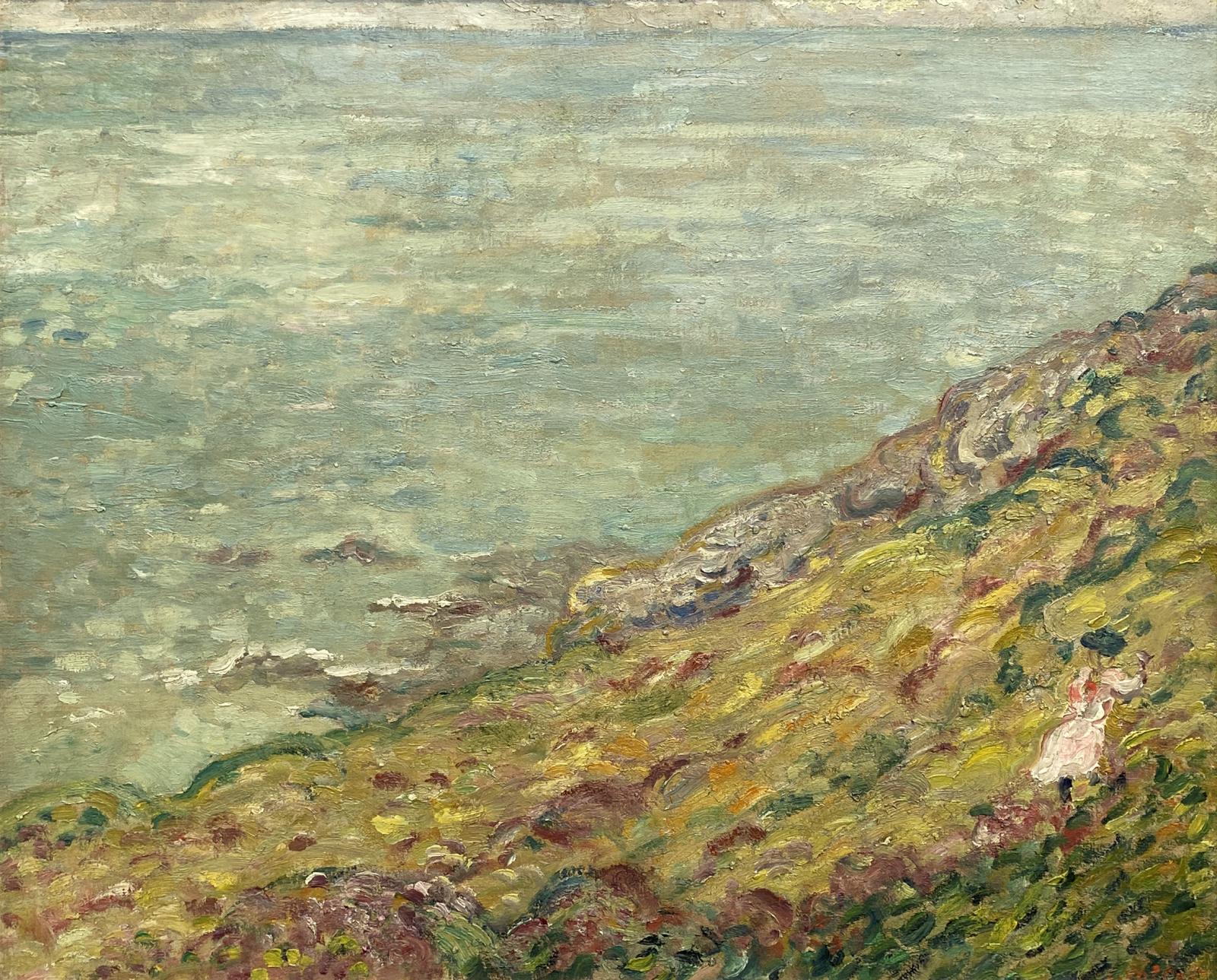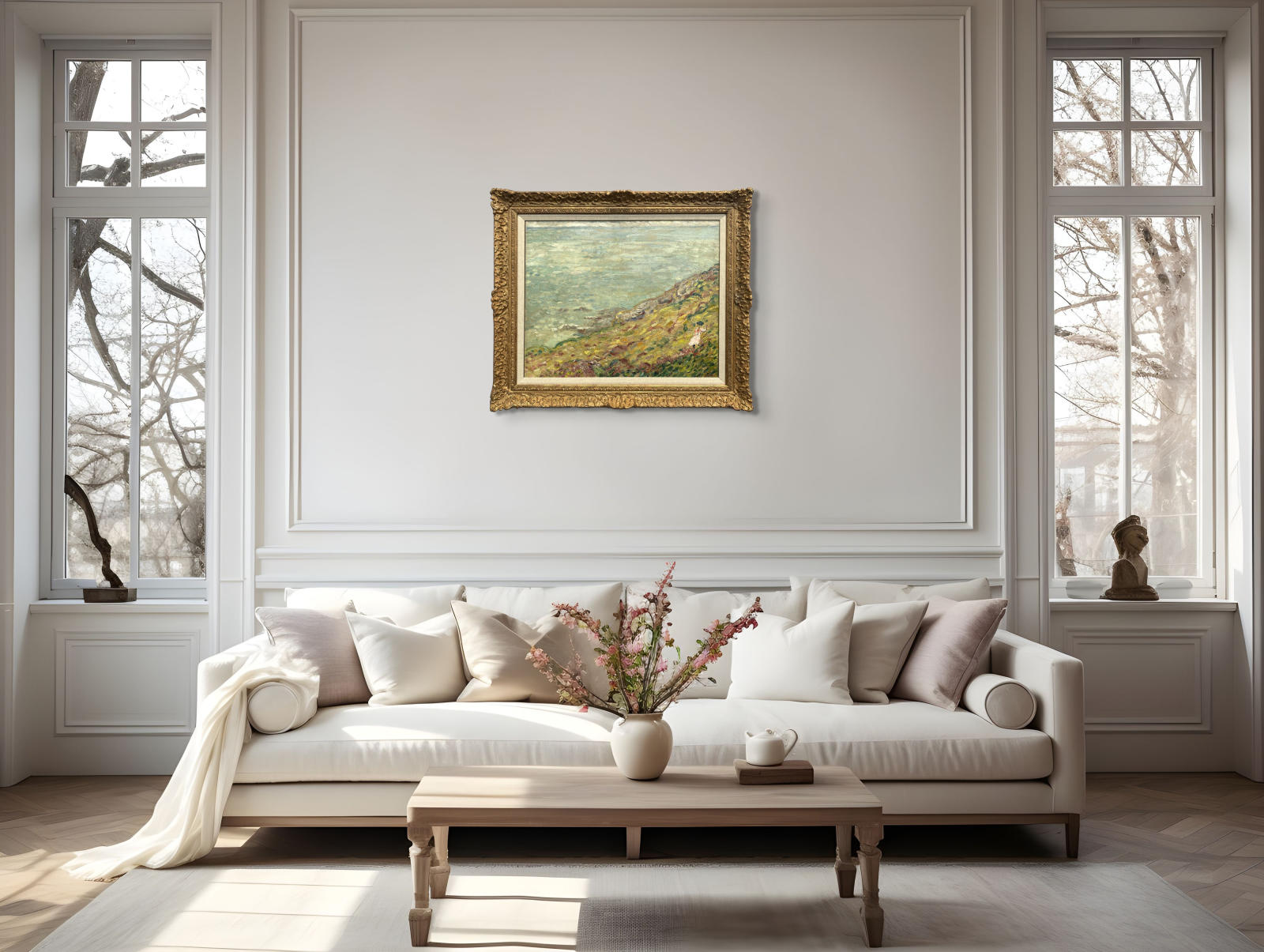Overview
One of the pre-eminent painters of the Post-Impressionist period Louis Valtat painted in an expressive style, a Van Gogh-influenced variety of Post-Impressionism, as opposed to the more decorative style of Bonnard and Matisse. His early work is hailed for its vivid colors and expressive use of thick paint. Valtat is regarded as one of the leading proponents of Fauvism, a movement that extolled the virtues of strong colors and distinctive painterly qualities over overt realism and naturalism. The colors remain expressive, although not strident, while the meticulously balanced scene retains a simplicity as well as an abstraction or flattening of the canvas with echoes to Post Impressionist restraint. The result is an extremely pleasing, vibrant, and well-balanced composition that showcases the artist's uncanny ability to create a unique space filled with light through his personal and particular choice and application of color.
Louis Valtat is known as one of the leaders and founders of the Fauvist movement, which did not formally begin until 1905 at the Salon d'Automne. Born in 1869, Valtat moved to Paris at the age of 17 to study at the École des Beaux Arts under Boulanger, Lefebvre and Constant. He was involved with the most influential groups of artists who numbered such as Renoir, Signac, d'Espagnat, and Luce, and exhibited widely throughout his career.
Awards
Jauvin d'Attainville Prize 1890
Chevalier d’Honneur 1927
Exhibitions
Salon des Artistes Indépendants, 1893
Durand Ruel Gallery, group exhibition, 1899
"La Libre Esthétique”, Brussels, 1900
Gebaüde der Secession", Vienna, 1903
Salon d'Automne, 1905, 1952 (retrospective)
Kunst Salon Ernst Arnold, Dresden, 1906
Berliner Secession, Berlin
Budapest
Prague
Moskva Tretyakov Gallery, Moscow 1908
Modern Art National Museum, Paris 1951
Museums and Public Collections
Art Institute of Chicago, Illinois
Ashmolean Museum at the University of Oxford, United Kingdom
Brooklyn Museum
Fine Art Museums of San Francisco, California
Fondation Bemberg Museum, Toulouse, France
Haggerty Museum of Art, Marquette university, Wisconsin
Harvard University Art Museum, Massachusetts
Hermitage Museum, Saint Petersburg, Russia
Indiana University Art Museums, Bloomington
Metropolitan Museum of Art, New York
Musée de Bordeaux, France
Musée des Beaux-Arts de Bordeaux, France
Musée des Beaux-Arts de Rennes, France
Musée d’Orsay, Paris
Musée d’Art Moderne, Paris
Musée du Petit Palais, Paris
Musée des Arts Decoratifs, Paris
Musée de Bernay
Musée de L’ Havre
Musée de Helinski
Musée de Nantes
Musée de Nimes
Museum of Modern Art, New York
National Gallery of Art, Washington, D.C.
National Museum of Art, Paris
Norton Museum of Art, West Palm Beach, Florida
Tehran Museum of Contemporary Art, Iran
Thyssen-Bornemisza Museum, Madrid
Saint-Denis de la Réunion
University of Iowa Museum of Art, Iowa City, Iowa



















